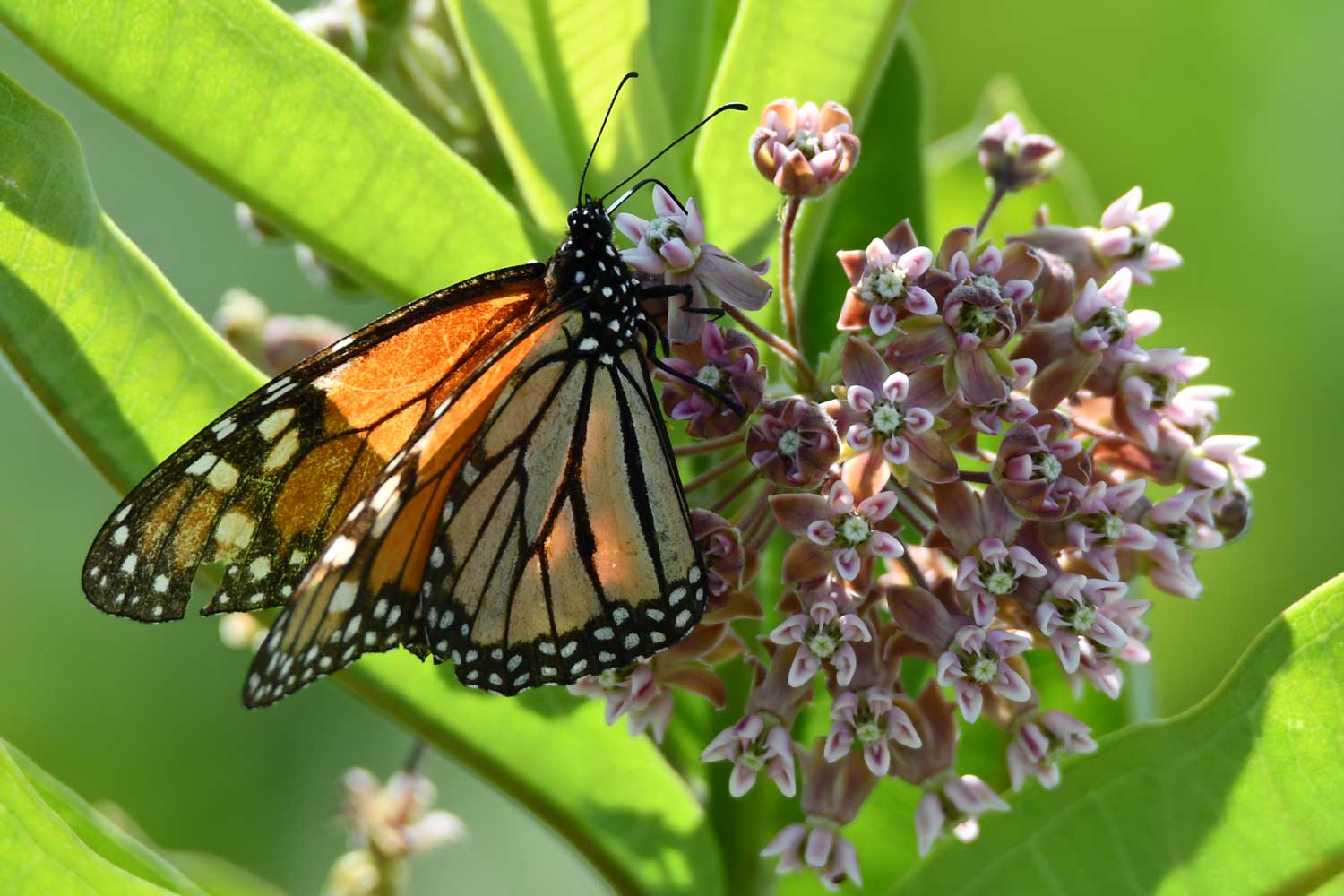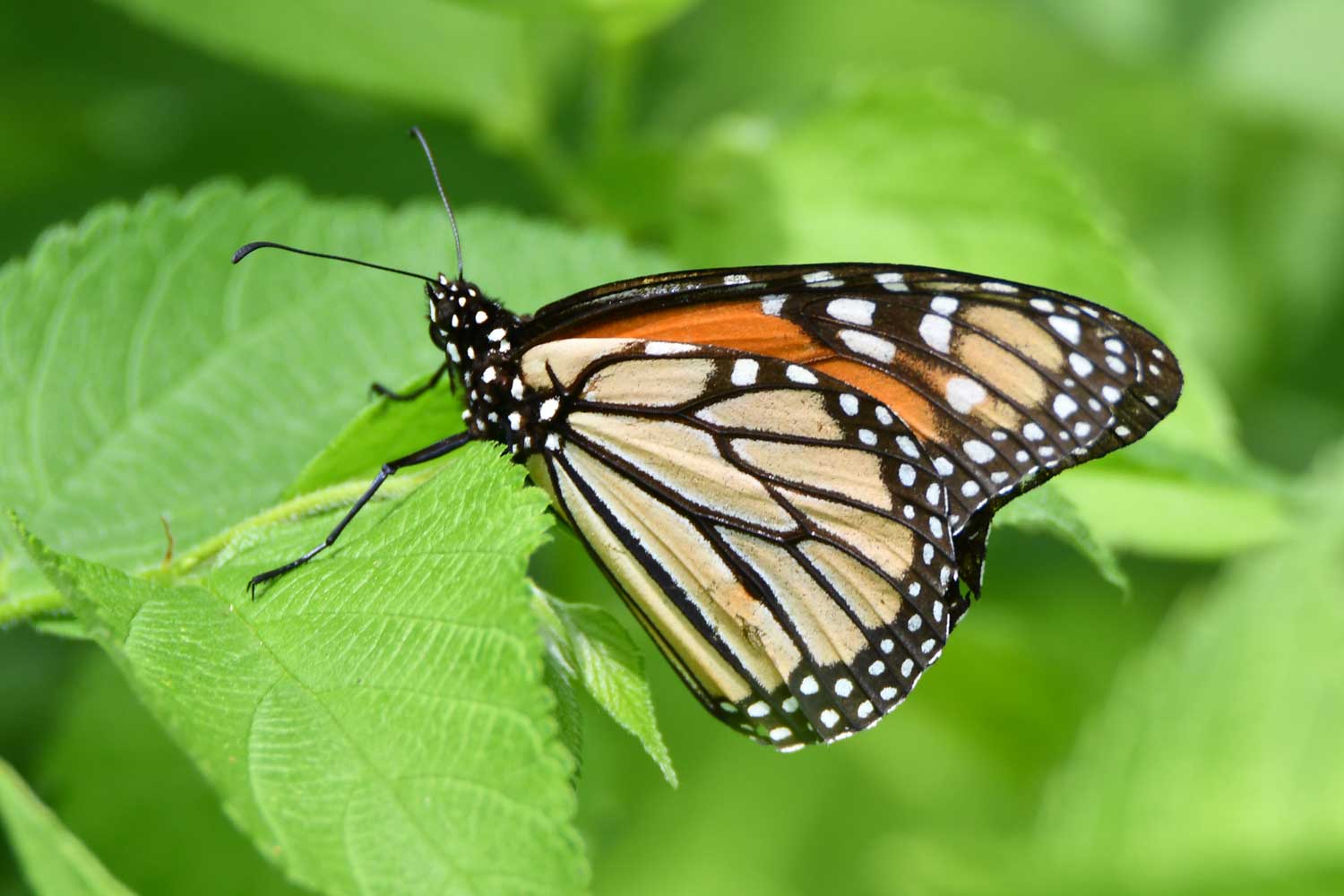Creature feature: The treasured monarch

Of the more than approximately 750 butterflies in the United States, the monarch is perhaps the most recognized and beloved of all.
As treasured as they are, they aren't as common as they once were. Since the mid-1990s, the monarch population has fallen by a staggering 80 percent, according to the Center for Biological Diversity. Because of this significant decrease in population, the center has petitioned to have monarchs included on the U.S. Endangered Species List.
The monarch population has plummeted for many reasons, including loss of habitat in their wintering grounds because of deforestation, a decline in the number of milkweed plants and climate change, according to the National Park Service.
Like all butterflies, monarchs undergo a series of transformations during their life cycle. They begin as eggs laid on milkweed plants, and those eggs hatch as caterpillars, or larva, that eat leaves from the milkweed plant, growing quickly as they do, according to the U.S. Forest Service. The caterpillar then enters a chrysalis where it transforms into a butterfly. The adult butterflies then lay eggs on milkweed plants, starting the cycle anew.
During the summer breeding season, the entire life cycle of a monarch lasts between two and five weeks. The last generation born each summer is a part of a super generation. These monarchs are the ones that migrate to their wintering grounds, and they live much longer than the generations before them. Super generation monarchs can live as long as nine months, the forest service reports.
READ MORE IN OUR CREATURE FEATURE SERIES
Learn more about these winged creatures below.
The name game
In a roundabout way, monarch butterflies are named for their orange color. Early European immigrants to the United States, in particular those from England and Holland, were impressed by the appearance of the butterfly and named it after their monarch, King William III, the Prince of Orange, according to Monarch Watch. William of Orange, as he was known, was the stateholder of Holland and later became the king of England. His royal status also gave rise to one of the nicknames for monarch butterflies, King Billy.
The scientific name for the monarch is Danaus plexippus, which means "sleepy transformation" in Greek. They were so named because of their process of metamorphosis, which involves a long rest as they transform from caterpillars to butterflies, according to the World Wildlife Fund.
Physical characteristics
These butterflies are easily recognizable for their orange wings, but if you take a closer look you'll see their wings are intricately detailed. Monarchs' wings have black borders that are dotted with white spots, according to the National Wildlife Federation. The wings also have thin, delicate black lines all across them, giving them a veined appearance. Their wingspan is between 3 inches and 4 inches, making them a medium-sized butterfly.
Male and female monarch butterflies are similar except for the presence of two black spots in the center of their hind wings that only males have. These spots are called scent glands, and they help the male butterflies attract mates, the wildlife federation reports. A less noticeable difference is that females also have thicker veins on their wings than males.
The physical appearance of a monarch is very similar to that of another butterfly, the viceroy. The two butterflies are so similar in appearance that they are often confused with each other, although there are a few tricks to telling them apart. The primary difference between them is that viceroys have a black line on their hind wings that monarchs lack.
As caterpillars, monarchs grow quickly, reaching lengths of up to 2 inches before entering their chrysalis. Their bodies are striped in bands of yellow, black and white, and they are most always seen on milkweed plants.
Where they live
Monarchs live all over the United States and North America, wherever there is suitable habitat for them, according to the National Wildlife Foundation. Essentially, they live anywhere milkweed grows, because it is their host plant, required for their survival.
The Midwest tends to have the highest monarch populations, because milkweed is more abundant throughout the region than elsewhere in the United States, according to the U.S. Forest Service. Across the Midwest and beyond, monarchs are typically seen in prairies, meadows and other grasslands, as well as along roadsides.
The United States has two populations of monarchs. The eastern population, which is the larger of the two groups, lives east of the Rocky Mountains and winters in Mexico. The western population is found west of the Rockies and winters in California. Small populations of monarchs also exist in Hawaii, Puerto Rico, New Zealand and some Caribbean islands, but they do not migrate to Mexico or California in the winter, the National Wildlife Federation reports.
What they eat
A monarch's diet varies throughout its life cycle. In the larval stage, as caterpillars, monarchs eat only milkweed plants, according to Animal Diversity Web. As adults, the butterflies consume nectar from a variety of flowers and plants.
The milkweed that the caterpillars consume contains chemicals called cardiac glycosides, which are toxic to most vertebrates. Even after the caterpillars metamorphose into butterflies, the toxins remain in their bodies, Animal Diversity Web reports. These toxic compounds protect monarchs from being preyed upon by other animals, because they will make them sick. Animals learn their appearance and pattern and know not to consume them to protect themselves from illness.
While most animals will not eat monarch butterflies, a few species that live in their wintering grounds in Mexico can and do. One kind of mouse — the black-eared mouse — and two types of birds — black-backed orioles and black-headed grosbeaks — can tolerate the toxins in the monarch's bodies and prey on the butterflies extensively, according to JourneyNorth.
Why they matter
Monarchs are admired and beloved by many, but they also play a key role in the ecosystem. As butterflies, they fly from flower to flower in search of nectar to drink, and this aids in pollination, according to the National Park Service.
While many animals are an important part of the food chain, this is not as true for monarchs. Although some species will eat monarchs, most do not because of their toxicity.
Planting milkweed in your yard is an easy way to help give monarch numbers the help that they need.








